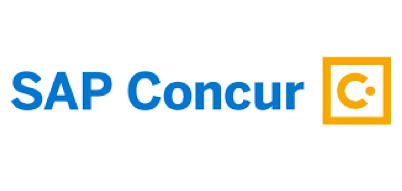This interview is an excerpt from our recent guide, 25 Innovations You Should Know in 2018.
In our personal lives, modernization is an everyday norm. We regularly upgrade our mobile devices. Our favorite apps constantly offer new features, and with a simple swipe we can start using new capabilities.
But embracing modernization in government comes with a unique set of challenges. “Government organizations have limited financial resources, and they have to make sure they’re allocating them in a manner that is driving citizen services as a primary outcome,” said Matt Gibbons, Senior Director of Public Sector at SAP Concur.
As an executive at a software-as-a-service company that provides travel and expense management services for public and private sectors, Gibbons knows firsthand the pressures that government agencies face as they balance legacy environments with demands for efficient services. He recently sat down with GovLoop to explain how agencies can afford a more modern IT environment that supports emerging technologies such as artificial intelligence (AI) and machine learning.
Before launching a modernization project, there are several questions that agencies must consider: Do I have the funds required to modernize? Do I have the people required to manage the implementation, and what do I have to give up in order to allocate money to this project?
“Going from an on-premise solution that was custom-built in the late 1990s or the early 2000s, to an environment that’s hosted in the cloud and leveraging AI and machine learning is a pretty big step to take,” Gibbons said. “And while some public sector organizations are doing a great job with it, many of them haven’t been able to tackle that just yet.”
At SAP Concur, operations for its 42,000 customers are hosted in the cloud. If you were to look at a typical day for SAP Concur in 2017, you’d see that their clients booked more than 200,000 trips in its system, processed almost 570,000 expense reports — 70,000 of which were submitted via mobile devices — and captured well over one million receipts in its system.
“In order to have truly effective machine learning you have to have vast amounts of data,” Gibbons said. “We apply various machine learning algorithms to that data to produce outcomes.”
High on the list of outcomes is enabling customers to create expense reports that write themselves. If you’ve ever had to file expense reports the old fashion way, then you know the frustrations of this often manual task. Historically, employees would gather their receipts, tape them to pieces of paper and transpose them onto a spreadsheet or other document.
“Now we’re capturing that information by taking pictures of receipts on a mobile device,” Gibbons said. Optical character recognition technology allows users to transform those receipts into an expense report and merge them with other receipts.
Using varying degrees of machine learning, SAP Concur can ensure that employees are selecting an airline that aligns with agency requirements, adhering to per diem rates and filing expenses appropriately, for example.
The other aspect of machine learning that is valuable for public sector organizations is auditing capabilities. Many agencies audit all of their expense reports. Much of that is mundane, manual processes that could be replaced with machine learning to review reports for any anomalous expenses and to reduce error rates.
So how can agencies take advantage of these capabilities when they are burdened with outdated technologies and manual processes?
“To the extent that public sector organizations can adopt software-as-a-service, meaning that they don’t have to go through and build the entire infrastructure themselves, they will find it much easier to get to advanced technologies, including machine learning and some levels of artificial intelligence,” Gibbons said. “If they were to have to go through and face the challenge of building it all themselves, developing the algorithms, and helping the systems to learn, that’s going to take a great deal of time and money.”
Technologies are changing in such a rapid pace that it’s difficult — if not impossible — for many organizations to stay current with technology. “One of the most effective ways for organizations to do that is to adopt software-as-a-service,” Gibbons said. “Then, the burden falls on the provider to make sure that the environment is kept current and that agencies can continuously innovate to meet their needs.”






Leave a Reply
You must be logged in to post a comment.